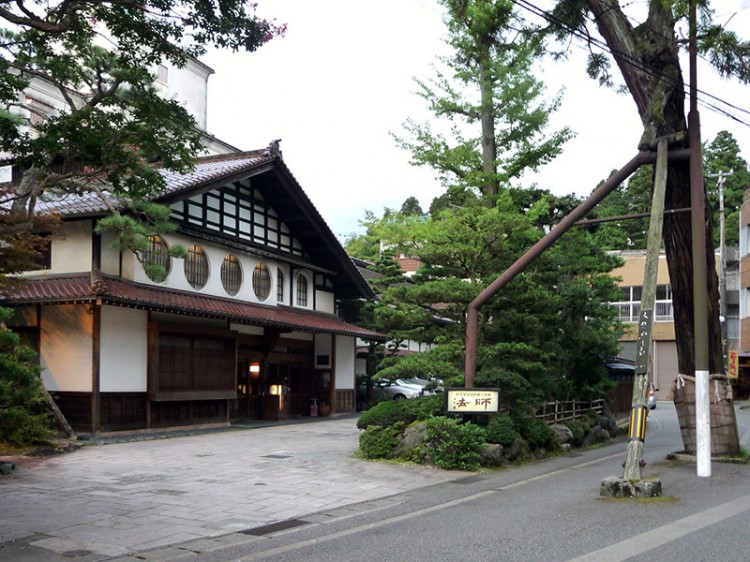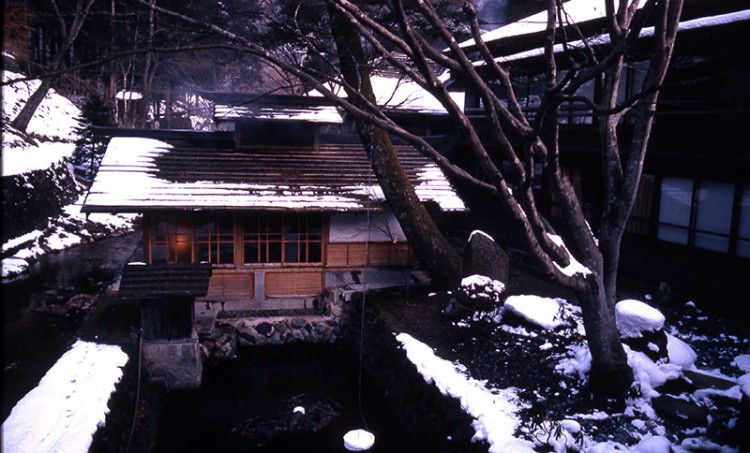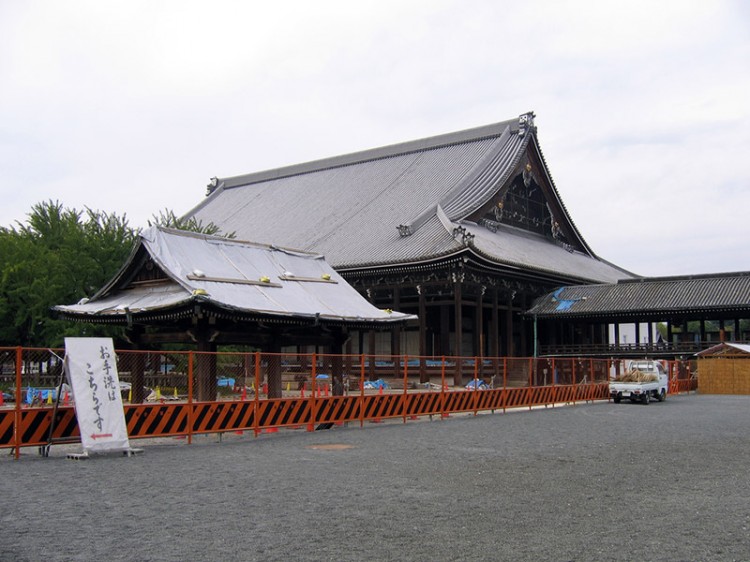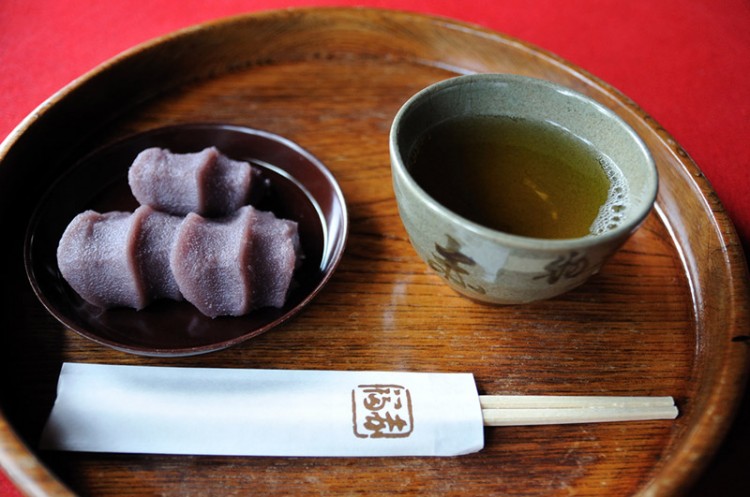Businesses die like anything else. I used to give joke directions to a house where I lived that involved a whole sequence of useless instructions like “turn left where the dry cleaner used to be.” If you’ve lived in the same place long enough, you can probably do the same. I can’t begin to count the number of places where I used to shop that have gone to the great strip mall in the sky, or the number of restaurant dishes I find myself craving that I’ll never be able to have again. No surprise, I guess, when the average lifespan of a company listed in the S&P 500 index of leading US companies today is just 15 years.
But a few businesses in the world have managed to hang in there for a mind-bogglingly long time, and a lot of them are in Japan. In America, we tend to think it’s impressive if a building is two hundred years old; we’d never expect that building to house the same hotel or restaurant that it did when it opened. But in Japan, there are 3,146 companies that are over 200 years old, and 21,000 companies that are over 100 years old. You can stay at a hotel that’s been in business since 705 and buy candy that’s been made at the same shop since the 16th century. There are also companies that have been owned by the same family since the day they opened, and one on that list may be familiar, because you can buy their products even if you don’t live in Japan.
Seriously Traditional Inns

When you get into researching the history of companies with record lifespans, you find that there are a lot of arguments about how you count what’s oldest and even what counts as being in business. But there’s one fact that seems to be agreed upon: the oldest hotels in the world are in Japan.
The first guest checked in to Nishiyama Onsen Keiunkan in Yamanashi in 705. That’s not a typo – the inn was really founded over a thousand years before the United States was even considered a country. It’s recognized by the Guinness Book of World Records as the world’s oldest hotel. The same family has run the place for 52 generations, and some of the staff also pass their jobs down to their children.
Just like the old claim to fame that “George Washington Slept Here,” the inn mentions some of its most famous customers on its web page, though they predate George by quite a bit. For example, in 752, Kouken, the 46th Emperor, was reputedly cured of an illness by bathing in the local spring water, and Tokugawa Ieyasu slept here twice! (For those of you who aren’t up to speed on your important shoguns, in the late 16th century he was founder of the last line of shoguns to rule before the Meiji restoration.)

Close behind, Houshi Ryokan has been in business since 718, and for 46 generations has been run by the same family, with each proprietor taking the name Zengoro Houshi. Many people dream of starting a business, and that’s how this one started, but probably not in the way you’d think. Not only is this company old, it claims that its origins are divine. In 717, Buddhist priest Taicho hiked up the sacred mountain Hakusan, and the deity of the mountain appeared to him in a dream. The deity instructed him to go to the village of Awasu, where the people didn’t know that they were sitting right on top of a hot spring with wondrous healing powers. Taicho ordered his disciple Garyo Houshi to build an inn while he went off to meditate and achieve satori.
Oddly, although these places have been around for a thousand years, apparently there’s been very recent contention for the title of oldest. You’ll find references indicating that as recently as 2006, they still held the title. It must be pretty shocking to wake up one morning to find that you’re not the oldest hotel anymore. What did the staff at Keiunkan do, go back to the 8th century in a time machine?
Another hotel that’s said to go back to 717 is Kinosaki Onsen Ryokan Senennoyu-koman in Hyogo, Kinki prefecture. Another dream business with a somewhat divine origin, its founder, Gonnokami Hiuke, dreamt about four Gods who told him he needed to live there from that point onward to protect his descendants. He built a shrine to those gods, and those descendants founded Kinosaki Onsen.
Former, Disputed, and Elusive Contenders

You’ll see some other contenders on lists of the oldest companies, but some of them have issues, including the one that for a long time headed the list.
The saddest story is that of the Kongou Gumi construction company, a builder of Buddhist temples. Founded in 587, for an incredibly long time they were world’s oldest, continuously operating family business. A recent president attributed their longevity partly to their flexibility in passing responsibility down the family line: rather than always choosing the oldest son, leadership would go to the one best suited for the job. Sometimes it wasn’t even a son – they used the common Japanese practice of adopting son-in-laws to keep the family name going, and the 38th leader was actually a woman (Imagine that!).
Unfortunately, age doesn’t always mean wisdom, and in 2006 the management found themselves in excessive debt, including investments made during the 1980s real estate bubble. They were acquired by Takamatsu, a large Japanese construction firm, and while you can still get a temple built by them, they are now a subsidiary, not an independent company.
Then there’s Ikenobo Kadokaia, which has been around since 587. The problem is that not everyone agrees this is a “company,” as the BBC puts it: “However, its stated purpose is the promotion of traditional floral arranging, which is not necessarily commercial in nature.” Basically, the argument is that if you start including organizations and associations and universities, it’s a different list. That makes sense to me, so I’m counting this one out.
And although we can’t tell you much about them because somehow they’ve managed to keep going this long without getting a lot of press, we should probably give a shout-out to Tech Kaihatsu, a machinery firm which started as a smithy in 760, and Genda Shigyo, which has been making paper goods since 771.
All in the Family

Japan is also a country with a strong tradition of handing businesses down in the family. There’s an international organization, Les Hénokiens, a fraternity of companies that are at least 200 years old and have stayed in the control of one family to the present day. Its oldest current member is the Houshi Ryokan – an honor that passed to them after the sad swallowing-up of the Kongou Gumi construction company. There are some other impressive Japanese members as well.
Akafuku is a tea house and confectionary that’s been serving pilgrims to Ise Grand Shrine since 1707. They make a red bean paste mochi in a wavy shape meant to symbolize the waters of the Isuzu River, “with the three ridges in the sweet bean paste representing the clear water that flows through the river, and the white mochi depicting the pebbles that lie on the riverbed.”

In their version of “George Washington Ate Here,” they tell the story of how in 1911, the Empress Meiji heard of the reputation of their mochi, and wanted to try some. Apparently concerned that the empress was too posh to eat something made with the brown sugar they’d always used, they made it with white sugar for the first time. I guess they knew their customer, because she ordered it repeatedly, and afterwards the owner celebrated May 19th as “Homare-Bi (Day of Honor),” commemorating the day they first sent rice cakes to the Empress.
Another member of Les Hénokiens is Okaya, a trading company that started as a hardware store in Nagoya in 1669. Which I’m sure is very fascinating, but it’s hard for them to compete for the interest of this writer in the company of sweet shops and of the next member on the list, which is also the one most of you have probably heard of: Gekkeikan Sake.

As far as I can tell, this the only company on this list whose product you can buy overseas. I have to confess, in my house, we have long been sake snobs. The only kanji my husband can read are the characters for daiginjo 大吟醸 denoting the highest grade of sake. And since Gekkeikan is the brand you can buy at any crummy liquor store (they have 25% of the US sake market) I’ve never thought much of it. But they’ve been in business since 1637, and they claim to base their corporate philosophy on “Quality, Creativity, and Humanity,” and who can argue with that? So maybe I should reconsider.
Last, but very much not least, is the confectionery Toraya. There’s no record of when they first opened, but they were already doing a booming business in Kyoto in the 1600s. They opened a store in Tokyo’s Asakusa district, where they are now headquartered, in 1869, when the capital also moved there.
This last category is the most interesting one to me, because it taught me a cultural lesson about something I now realize is kind of a recurring theme. You often see dramas and movies where one of the central conflicts is between parents who were planning to hand down a business to their child who wants to go pursue a different dream. In the context of the kind of family business longevity we see in this article, this is surely a much bigger deal than it seemed from my American point of view. And you see the more subtle point in fiction as well – where there’s a child who has gone off to do something instead of taking over the business, and the parent who is okay with it. That’s a bit of character development that will be more meaningful to me now, and hopefully to you too.
